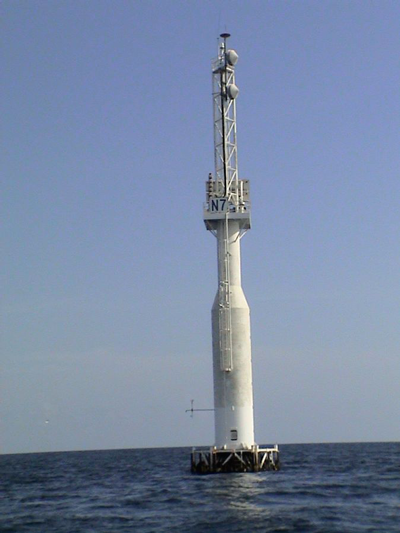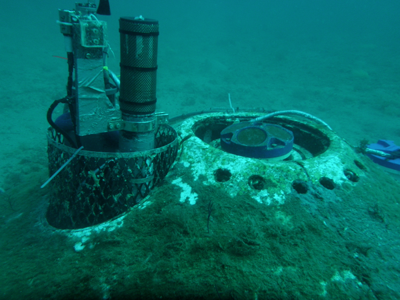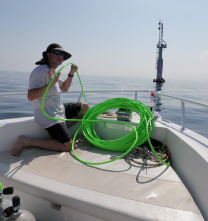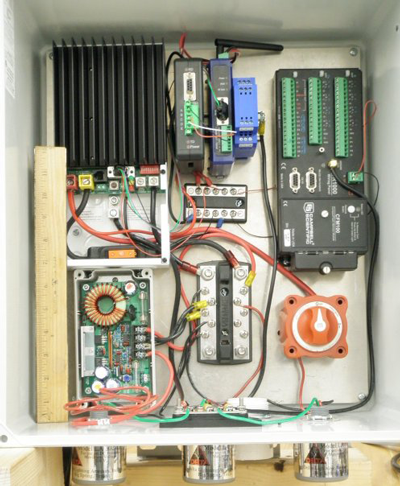
Recent events in the Gulf of Mexico—oil spill, red-tide algae blooms—have shown the need for real-time accessibility of oceanographic data for this region. Quick access to this information can show the extent of damage and help in planning responses. In response to this need, Florida State University (FSU) was asked to design a telemetry system that would retrieve oceanographic measurements from a tower located about 12 mi off shore.
The tower already hosted a weather station with various atmospheric instruments and a Campbell Scientific CR3000 datalogger. The CR3000 stored data from the sensors and then transmitted the data to shore via a radio modem. FSU had the task of integrating an existing group of oceanographic instruments on the ocean bottom to the datalogger and radio system on the tower.

Before this project was undertaken, each of the oceanographic instruments stored its data until divers could visit the site, uninstall the instruments, go to the surface and retrieve the data, and return the instruments to the bottom. Integrating the ocean-bottom sensors into the telemetry system on the tower would make a huge difference in the accessibility of this highly desirable information.

Eric Howarth, a biologist with FSU, was able to design a system in which a cable carries the data from the sensors, through a conduit secured to the ocean bottom, then up to the telemetry system high on the tower.
As the system now functions, the oceanographic intelligent sensors and sondes are mounted in a protective housing in water 66 ft deep and about 625 ft away from the tower. The instruments measure current speed and direction, wave height, water temperature, conductivity, pH, turbidity, and dissolved oxygen and nitrate.
The input from all of these different sensors is measured and stored by a CR1000 datalogger, as scheduled by on-site or remote onshore programming. The CR1000 passes the information to the existing CR3000, and the CR3000 transmits both the oceanographic data and the atmospheric data (from the sensors on the tower) via radio to an onshore site. The dataloggers’ ability to communicate with each other, with sensors, and with other peripherals via PakBus® (our own protocol), Modbus, and RS-232 was a significant benefit to the project.
The integration of the oceanographic instruments with the telemetry system on the tower resulted in a reliable, low-power solution. This solution enables consistent flow of data from the underwater sensors, and remote control of measurement frequency and power supply.


